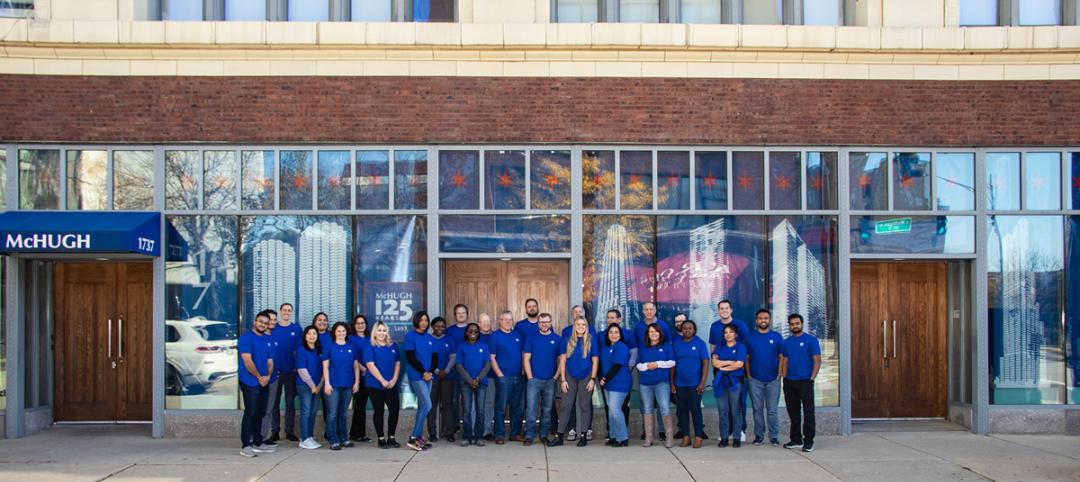Last month, Kraus-Anderson, the construction management and real estate development firm, announced that it had hired Nate Enger as Design Phase Services Manager to act as a go-between for the firm and its architect partners. Enger, an architect himself, has more than two decades of design collaborative expertise, most recently as a partner and vice president with ESG Architecture & Design. He also worked as a senior design architect with Ryan Companies. Enger and Chad Rempe, Kraus-Anderson’s other Design Phase Services Manager, spoke to BD+C via email about their roles. The following is an edited version of that conversation.
BD+C: In your capacity as design phase services manager, you will act as a liaison between Kraus-Anderson’s precon services and the architect-designers it works with on projects. How do you see the scope of your responsibilities?
Enger: We see this role as an opportunity to educate and align the team with holistic project goals, which include architecture, but also focus on finding ways for the full project team to innovate outside of the constraints of traditional project delivery methodology. My role will be to help catalyze collaboration during the formative phases of the project to realize value for our owners, and to help foster a culture of mutual project ownership among project teams.
Why did the firm feel the need to bring on a design-phase service manager at this time?
Rempe: Prior to hiring Nate, I've been the only Design Phase Services Manager within our Preconstruction Team. With Nate joining our team, we're doubling our capacity to better serve our clients and project teams in managing the design and preconstruction phase of a project. As a Design Phase Services Manager, Nate will [work with] our project architect/design partners to ensure project teams are aligned on the project goals and objectives, while also ensuring the right resources are engaged at the right time to deliver effective and efficient design.
Aside from Nate, does Kraus-Anderson have any other architects or designers in its employ?
Rempe: Kraus-Anderson does have two additional architects on staff. One works within our Preconstruction Team as a Building Science Manager, and another works as a Strategic Facility Planner.
Aligning designers with firm's project team
Nate, your resume includes stints with architecture and construction firms. How might that background color your perspective about projects and team collaboration?
Enger: I believe the key to successful partnerships is context. Working within both [architects and contractors] gives me unique insight into the objectives and values that drive the two sides of the industry. Knowing what defines success for each of these groups (among the many [factors] that contribute to the design and construction of projects) affords an opportunity to identify common ground and context on which to form a partnership of mutual respect, shared passion, and diversity of thought.
The opportunities and challenges we have as an industry will benefit from a true collaboration that harnesses these varied skillsets under a model that encourages knowledge sharing and innovation, in contrast to an approach of accepting partners as a necessity of the process.
We recently posted an article about a cancer center in California that's being designed and built under a Collaborative Project Delivery contract. Does your hire in any way signal what kinds of project contracts Kraus-Anderson favors, now and in the future?
Enger: I cannot speak specifically to contracts, as often we cannot control the type of contract vehicle that is executed. What I can say is that the intent we have through my hiring and many other exciting changes afoot here at Kraus-Anderson is to provide owners with more comprehensive project evaluation, earlier in the process, utilizing flexible team structures to solve challenges unique to each project. We plan to do this through identifying a shared set of values between ownership and the broad project team, breaking down traditional structures between disciplines that roadblock collaboration and innovation, and providing open, transparent, and timely access to project data as it is developed.
What are the first projects Nate will be working on?
Rempe: A few of the initial projects will be for KA's development team working through conceptual master planning efforts.
Related Stories
AEC Tech Innovation | Jan 14, 2023
CES recognizes a Dutch firm’s wearable technology for construction management
The firm’s TokenMe product offers construction managers a real-time crowd- and asset-tracking solution via low-power, location-aware radio and RFID tags and multiple sensors through which data are processed with cloud-based artificial intelligence.
Market Data | Jan 10, 2023
Construction backlogs at highest level since Q2 2019, says ABC
Associated Builders and Contractors reports today that its Construction Backlog Indicator remained unchanged at 9.2 months in December 2022, according to an ABC member survey conducted Dec. 20, 2022, to Jan. 5, 2023. The reading is one month higher than in December 2021.
Religious Facilities | Jan 9, 2023
Santiago Calatrava-designed St. Nicholas Greek Orthodox Church opens in New York
In December, New York saw the reopening of the new St. Nicholas Greek Orthodox Church and National Shrine—the only religious structure destroyed on 9/11. Renowned architect and engineer Santiago Calatrava designed St. Nicholas Church to address the traditional Greek Orthodox liturgy while honoring the Church’s connection with the World Trade Center Memorial site.
Sustainability | Jan 9, 2023
Innovative solutions emerge to address New York’s new greenhouse gas law
New York City’s Local Law 97, an ambitious climate plan that includes fines for owners of large buildings that don’t significantly reduce carbon emissions, has spawned innovations to address the law’s provisions.
Fire and Life Safety | Jan 9, 2023
Why lithium-ion batteries pose fire safety concerns for buildings
Lithium-ion batteries have become the dominant technology in phones, laptops, scooters, electric bikes, electric vehicles, and large-scale battery energy storage facilities. Here’s what you need to know about the fire safety concerns they pose for building owners and occupants.
Market Data | Jan 6, 2023
Nonresidential construction spending rises in November 2022
Spending on nonresidential construction work in the U.S. was up 0.9% in November versus the previous month, and 11.8% versus the previous year, according to the U.S. Census Bureau.
Industry Research | Dec 28, 2022
Following a strong year, design and construction firms view 2023 cautiously
The economy and inflation are the biggest concerns for U.S. architecture, construction, and engineering firms in 2023, according to a recent survey of AEC professionals by the editors of Building Design+Construction.
Contractors | Dec 27, 2022
McHugh Construction, headquartered in Chicago, celebrates its 125th anniversary
McHugh Construction, Chicago, celebrates its 125th anniversary, December 8, 2022.
University Buildings | Dec 22, 2022
Loyola Marymount University completes a new home for its acclaimed School of Film and Television
California’s Loyola Marymount University (LMU) has completed two new buildings for arts and media education at its Westchester campus. Designed by Skidmore, Owings & Merrill (SOM), the Howard B. Fitzpatrick Pavilion is the new home of the undergraduate School of Film and Television, which is consistently ranked among the nation’s top 10 film schools. Also designed by SOM, the open-air Drollinger Family Stage is an outdoor lecture and performance space.
Adaptive Reuse | Dec 21, 2022
University of Pittsburgh reinvents century-old Model-T building as a life sciences research facility
After opening earlier this year, The Assembly recently achieved LEED Gold certification, aligning with the school’s and community’s larger sustainability efforts.

















